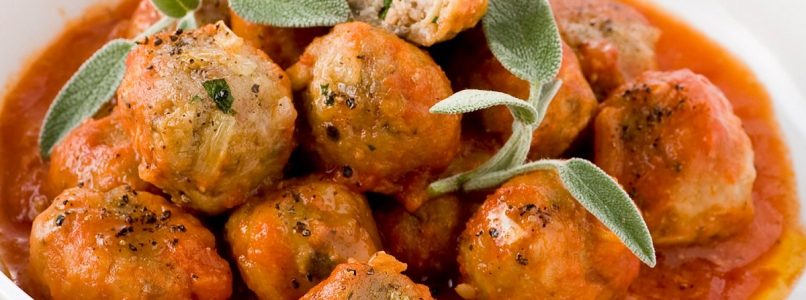Round and of the perfect size to be eaten in very few bites: this is how meat, fish or vegetable balls are for us. The best part? The crunchy crust, golden to the right point and which wraps a soft and tasty dough. To eat with a fresh salad, with a side of vegetables or with a plate of spaghetti with sauce… In short, land meatballs all agree: omnivores, vegetarians and above all, they are the perfect trick to make children eat more vegetables, fish and meat, and more! We, just talking about it, we already smell it and begin to feel a strange desire for meatballs … and you? But how are meatballs made? Follow our few and simple rules to try to prepare them!
Meat
To cook excellent meatballs it is not necessary to buy very expensive cuts of meat: just buy a cut of meat that has a good balance between fat mass and lean mass. Because? This will ensure a balanced flavor to the meat and the right texture. The meatballs can be made by choosing only one type of ground meat or by mixing them together. For the beef or veal you can choose different cuts such as the belly, the shoulder or the neck. And the pig? Obviously, as per tradition "nothing is thrown away from the pig", and in fact its very tasty meats are perfect for preparing delicious meatballs. The cuts to be preferred are shoulder and pancetta (both fresh and smoked). Even the meats of chicken and turkey they are well suited to be transformed into meatballs, in this case we recommend using the breast or the spindles.
The eggs
They are a natural thickener that also acts as a "glue". However, they should be used in moderation: add one egg at a time and knead. Make sure that the dough is not too moist. If the consistency is too soft, you can adjust it this way: add some breadcrumbs (about 1 tablespoon), mix and check the consistency of the dough again. Continue like this until you get the desired consistency, but remember: it must never be too wet or too dry. In both cases the meatballs will fall apart during cooking.
The aromas
Grated parmesan, pepper, chilli, salt, spices, aromas and imagination. Meatballs must absolutely be flavored with everything you prefer to make them more unique and with a more inviting taste. Do you want to make them more ethnic? Add a mix of spices such as curry, chilli and coriander.
The dimensions
If you think of grandma's meatballs, how do you remember them? Many and small in size. Let's dispel the myth that meatballs must be large: in order to be cooked evenly and in about half an hour they need to be small balls of about 50 g each. Imagine biting into a crispy and very hot meatball on the outside and raw and cold on the inside? No. So, remember: prepare lots of regular-shaped balls. If you prepare them slightly larger than an olive, you will prepare delicious aperitifs based on meatballs!
The cooking
In sauce, fried or baked? How do you prefer them? It's not that easy to choose.
Let's start with tradition, the meatballs with sauce, exactly like those from the grandmother are not so easy to replicate, but we can try. The secret is slow cooking and a good homemade tomato sauce. Once browned with a drizzle of oil, add the tomato sauce and cook over low heat for 20-25 minutes; halfway through cooking, turn them to cook on both sides. But have you ever tried the meatballs in sauce with double cooking? They are very tasty! The double cooking requires that the meatballs are first of all fried in abundant hot oil until the crunchy external crust is formed; drain the meatballs and pour the tomato sauce into the same pot to flavor the sauce and cook for about 15-20 minutes. At this point, place the meatballs in the sauce and continue cooking for another 20 minutes. Check often that the sauce does not shrink too much: the meatballs must cook in plenty of sauce. What a smell!
The most gluttonous, the fried meatballs. Enjoyable. Once the meatballs are prepared, dip them in boiling oil and brown them on all sides. Once cooked, drain them from the oil and let them dry on absorbent paper.
For the healthiest, the Baked meatballs are ideal: they require little amount of fat. Just lightly grease a baking dish, place the meatballs on it and cook them in a static oven at 180 ° until they are golden brown, it will take about 40 minutes.
September 2021
Giulia Ferrari

